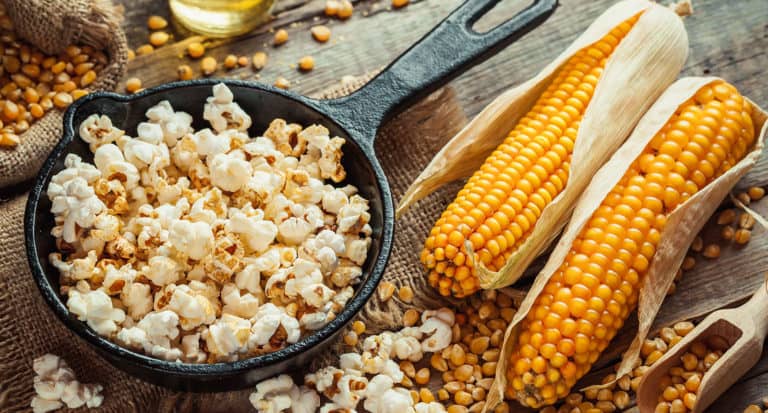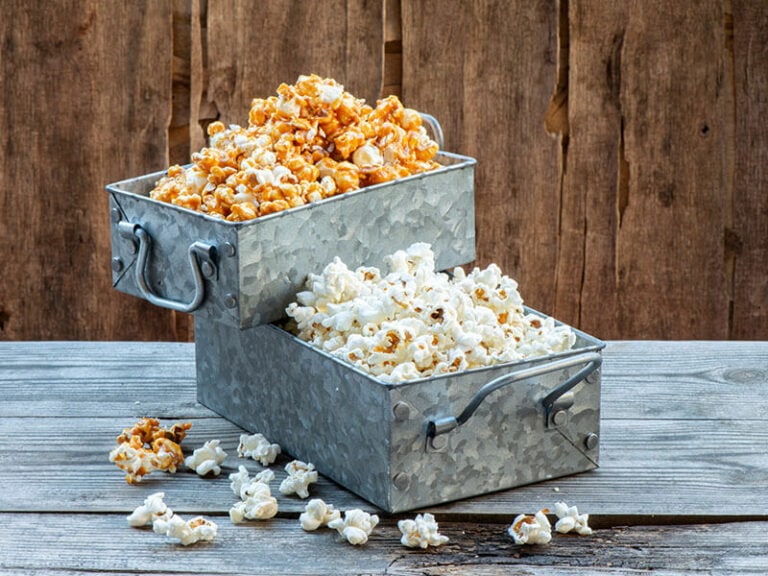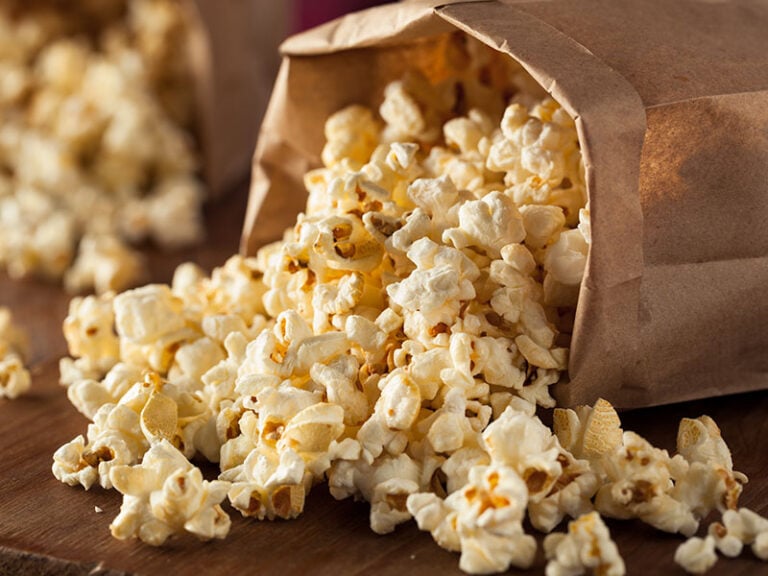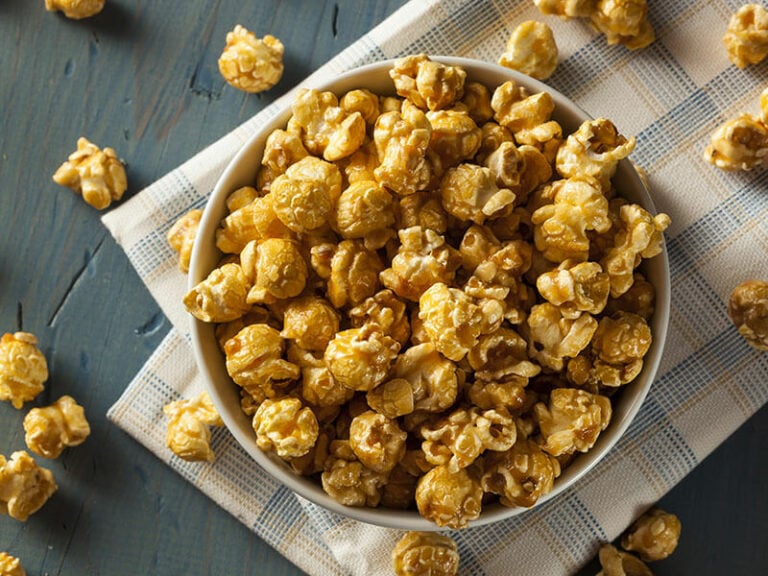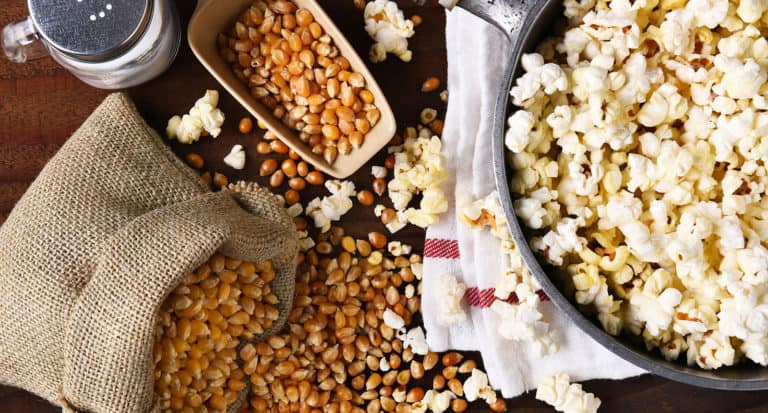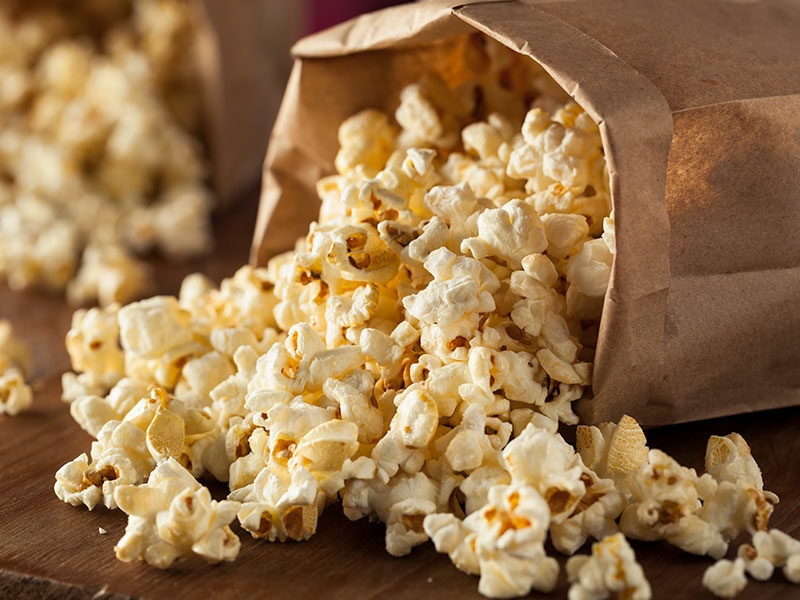
“How long does popcorn last is an implicit inquiry stuck on many people’s minds for ages.
It is not the complexity in the matter that makes everyone question. Instead, it is because popcorn is so widely popular. Therefore, many topics surrounding this iconic snack emerge, such as how to make popcorn without a maker, or popcorn shelf-life.
Enjoying tasty popcorn is everyone’s cravings. However, there are inevitable occasions when you cannot consume all your freshly-made snacks and have to stock them for later use. The nature of this practice gives birth to the topic question.
Let this article clear up your ambiguous mind about the question above. Alright! Let’s get right into this snacking adventure!
Your Instant Answer On Popcorn Shelf-Life
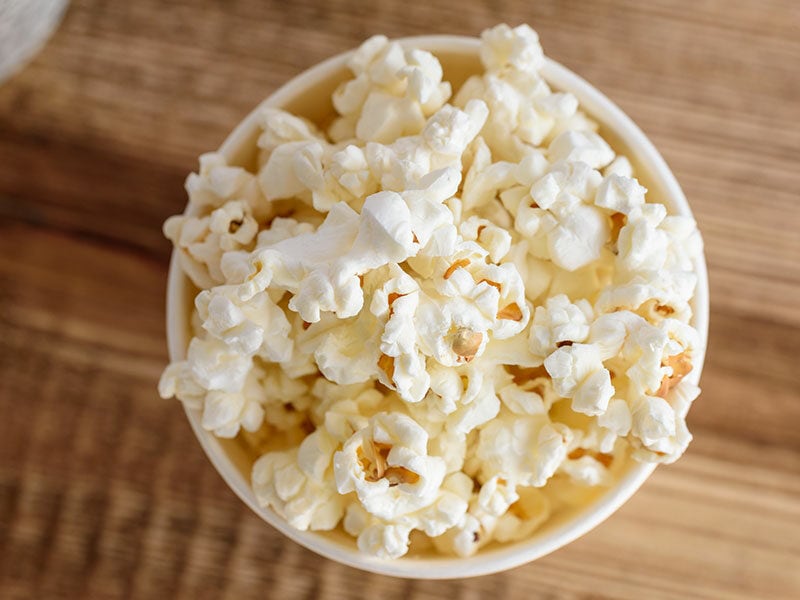
Popcorn is “one of the most popular snack foods for consumers in a large part of the world” (1). Regarding shelf-life, (unpopped) can last for up to 12 months after the expiration date, while popped popcorn should be consumed immediately or in 2 weeks’ time.
Within each category above, there are further subtypes with slightly different lifespan remarks. I will discuss them thoroughly in subsequent sections.
What Kills Popcorn Over Time?
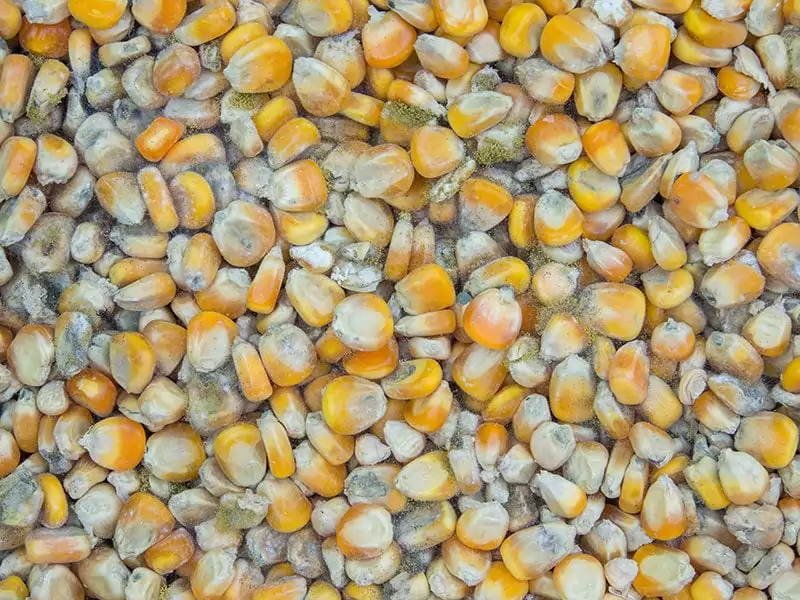
The ultimate killer of popcorn over time is nothing else than moisture. This is true for both unpopped kernels and popped popcorn.
Let’s have a look at unpopped kernels. They have a strong external shell (hull) to securely hold the moisture inside. Under the impact of high temperature, the internal moisture turns into steam and expands, generating massive pressure on the hull (2).
Only dry, solid hulls can expand and pop into your delicious popcorn. If these external coatings are moist, they will be unable to expand under heat impact. Simply speaking, you cannot make popcorn from these kernels anymore, regardless of the cooking methods.
Now, let’s move on to popped popcorn. Assuming that you successfully shield your kernels away from moisture, your favorite snack can still become a disaster if it meets this killer after being cooked.
Moisture messes up your popcorn texture and flavor. Instead of its fluffy and crunchy nature, moist popcorn brings about terrible soft chewing experiences. Over time, popcorn also loses its unique flavor, making it stale.
The key takeaway here is that never let moisture come near your snack, both before cooking (kernels) and after cooking (popcorn). It is the fundamental principle for storing and fixing popcorn, which are the main focuses of later parts.
Shelf-Life Of Various Popcorn Types
This part will dig deeper into different popcorn varieties based on their popped status.
I will not go into the typical classifying criteria like shape (snowflake, mushroom, wings, etc.) or color (white, yellow, red, etc.).
Before diving into the main parts, let’s have an overview look via the following table:
Type 1. Unpopped Kernels
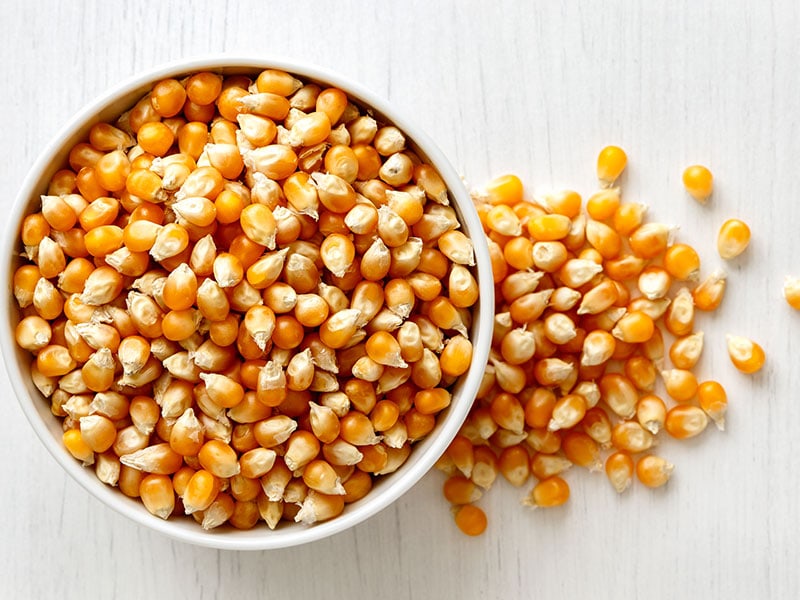
Most unpopped kernels you stock in your pantry are through purchasing activity. Therefore, it is essential to check the expiration date printed on the package’s label. The best practice is to pop those kernels before the expiration date.
You will also find this information on the boxes of microwaveable kernel packages. Use it as your guide to consuming your favorite snack. However, as manufacturers coat this kernel type with oils, it usually has a shorter lifespan compared to the regular ones.
However, I believe the real question here is: “Is it OK to pop and consume kernels after their printed expiration date?”.
The answer is YES! Unpopped kernels can last for more than a year after their labeled “death dates”. Nevertheless, for microwaveable kernels, you should consume them latest by three months past the expiration date.
However, to achieve a longer lifespan, you have to store kernels correctly in dry spots and away from “moisture the killer”.
Moreover, while you can go beyond the expiration date, remember that the longer you store them, the less quality they are. Even if you purchase popcorn kernels of the highest quality, its overall taste will still deteriorate over time, so be sure to finish them before the “best by” date.
This incident happens because kernels lose their internal moisture over time. Thus, under heat impact, there would not be enough pressurized steam to pop the kernels’ hull anymore. The ultimate result is small and inconsistent popcorn flakes.
Type 2. Popped Popcorn
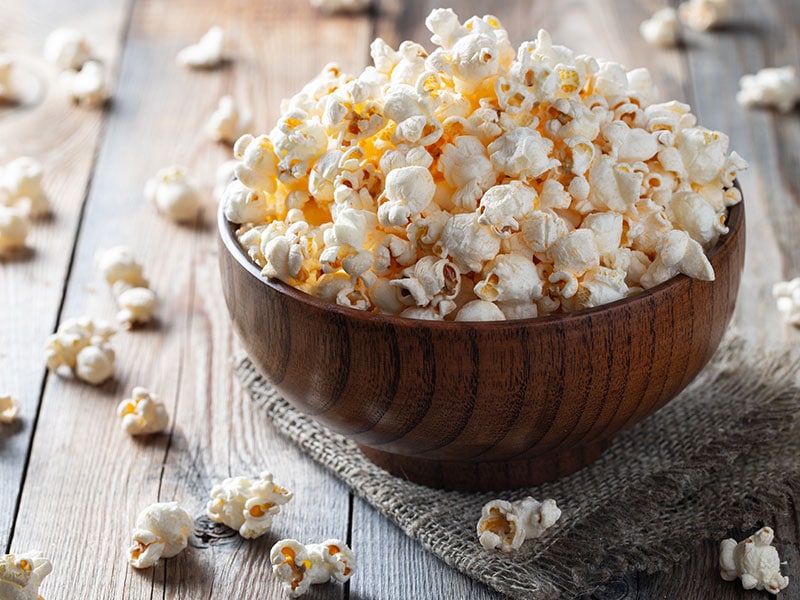
Unlike type #1, you can have popcorn by purchasing pre-popped snacks at the store or by doing it yourself in your kitchen.
Things are simple with pre-popped popcorn, as you can identify the “best-before date” on its packages. Typically, it is 2-3 months after the production date.
You should not consume ready-to-eat popcorn that has passed its expiration date. Although it is still edible, it gradually becomes dry and flavorless. Do not expect the popcorn to be fresh and fluffy after two months past the expiration date.
There is also a brand reputation factor here. Commercially-popped popcorn from high-quality brands has longer lifespans than low-quality manufacturers. It also has a better flavor and texture. Thus, make sure to consider this aspect as well.
Also, remember to close the package after eating. If you let the package open constantly, moisture will shorten your popcorn shelf-life from months down to 1-2 weeks.
If you manage to make popcorn yourself, the lifespan of this snack falls around 1-2 weeks after popping under proper storing conditions. When two weeks’ time is gone, your popcorn quality will drop off significantly.
The above shelf-life information applies to traditional popcorn. Things are slightly different with gourmet popcorn. Its lifespan depends significantly on the seasonings of your specialty snack. To reduce this complexity, it is better to enjoy the snack immediately.
Detectable Signs Of Expired Popcorn
Knowing the lifespan of various popcorn varieties is a good start. However, things will not always be smooth. Learning some detective skills in identifying expired popcorn is also essential. The subsequent part will focus on this content.
1. Bad Unpopped Kernels
Although unpopped kernels can survive up to a year after the “due date”, they can totally go wrong before that.
There is no visual sign to indicate whether the unpopped kernels have gone bad. The issue only reveals itself when you start to pop them. The obvious signs are your kernels popping inconsistently and weakly, and the resulting popcorn flakes are small in size.
Usually, incorrect storing practices contribute the most to the deaths of kernels, as they invite moisture. As mentioned above, moisture will take away the kernels’ ability to expand, making them unpoppable.
So, you do not need to wait one year past the expiration date for the unpopped kernels to go bad. Once moisture creeps into the storing spaces, these kernels expire at a much faster pace.
Unpopped kernels can also go stale under continuous contact with air. Theoretically speaking, you should suck the air out of the storing packages to prevent kernels from going stale.
2. Bad Popped Popcorn
Detecting bad popped popcorn is an easier task. You can tell your favorite snack has gone wrong through its soft texture and flavorless aroma. You will have no crunchy and fluffy popcorn in your servings. There is also no fresh flavor in the snack.
However, unpleasant flavor might not always be an indication of spoiled popcorn. This is especially true if you prepare the snack with a popcorn maker. Should the device be dirty, it can give your popcorn an off-putting taste.
In this case, you’ll need to clean your popcorn-making machine. For the best results possible, make sure you know the correct methods to clean your popcorn machine.
Another obvious sign of bad popcorn is the existence of mold. Once again, this is the by-product of letting too much moisture into your storing spaces for a long duration. Hence, make sure to check out for signs of mold before eating.
Storing Tips For Popcorn
I mention a couple of times throughout my articles about “proper storing conditions”. Well, the fundamental principle is to keep moisture and air away from your storing spaces. Besides, there are a few tips to make your popcorn storage more practical.
Tip 1: Avoid Direct Sunlight
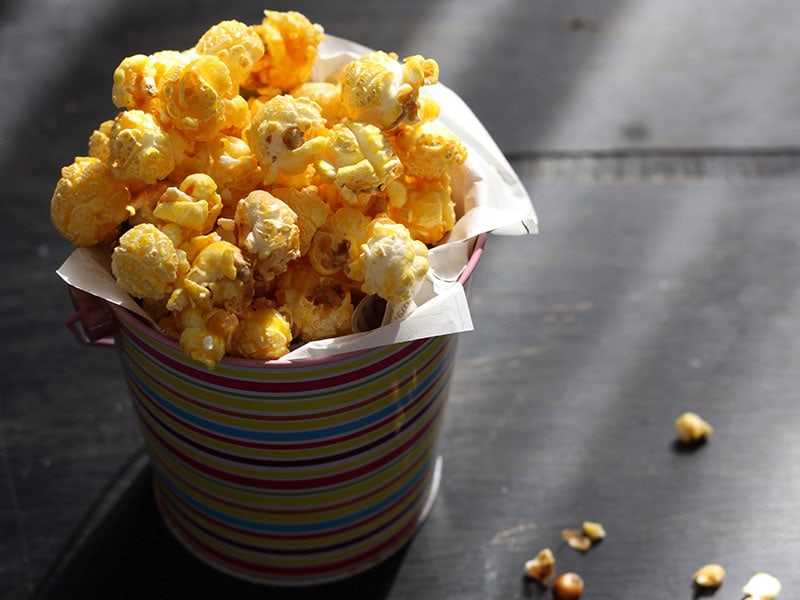
The first tip is to avoid direct sunlight in your storing areas. Direct sunlight may make your popcorn containers too warm and interfere with the snack inside, draining its inner moisture (for kernels) or distorting its shape (for popped popcorn).
This tip is especially useful for gourmet popcorn, as there are involvements of other toppings (like caramel, chocolate drizzles). Under direct sunlight, these ingredients melt quickly and stick your popcorn together inside the containers.
Tip 2: Wait Until The Popcorn Reach Room Temperature
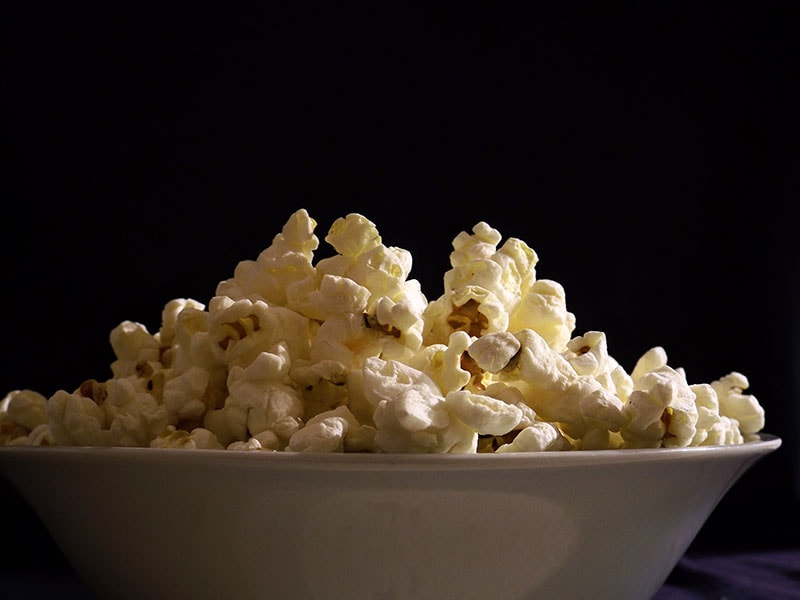
The second tip considers the storing temperature. This tip applies to popcorn only. After popping the kernels, the freshly-made popcorn is very hot. You should not store them immediately.
Instead, let’s wait until the popcorn reaches room temperature. If you store fresh and hot popcorn right away, the containers will trap the heat inside, converting more internal moisture into steam. The excess moisture will make your popcorn stale and soft.
To accelerate the cool-down process, you can lay those hot popcorn flakes in an even layer of a baking sheet. Then, place the sheet somewhere cool until everything reaches room temperature. Never put hot popcorn into the refrigerator for cooling down.
Tip 3: Utilize Airtight Containers
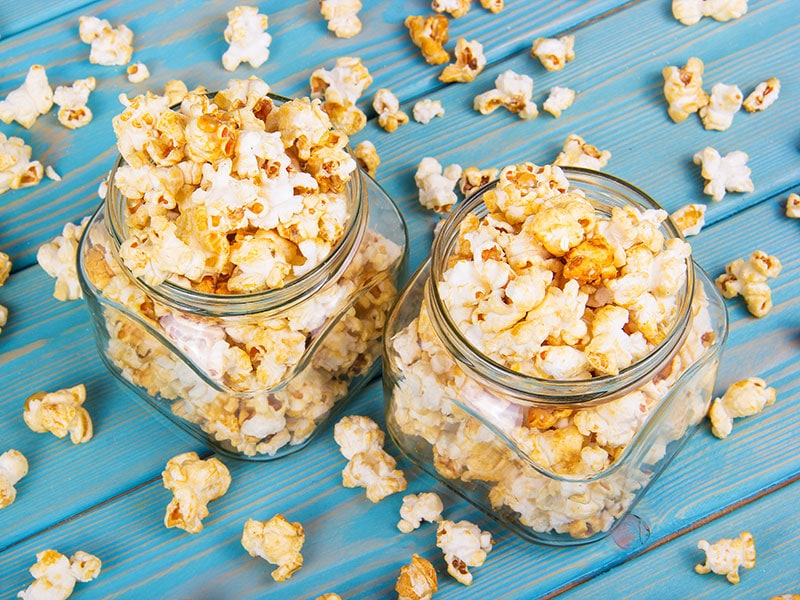
The third tip relates to the utilization of airtight containers. They shield your kernels and popcorn effectively from moisture and from getting soggy.
You can take a step further by covering the top of your containers with a plastic layer before securing them with the lid.
After that, place your airtight containers in dry spots like the pantry or cupboard until your next snacking.
You should also use airtight containers that are safe for the freezer in case you plan to freeze your leftover popcorn on the next occasion. Usually, containers with a snowflake mark on the bottom are freezer-safe.
If you use bags instead of airtight containers, remember to squeeze out all the inner air to prevent your popcorn from getting stale.
The following video illustrates this “airtight containers” idea more vividly. Thus, make sure to check it out:
Myth Buster: Freezing The Popcorn?
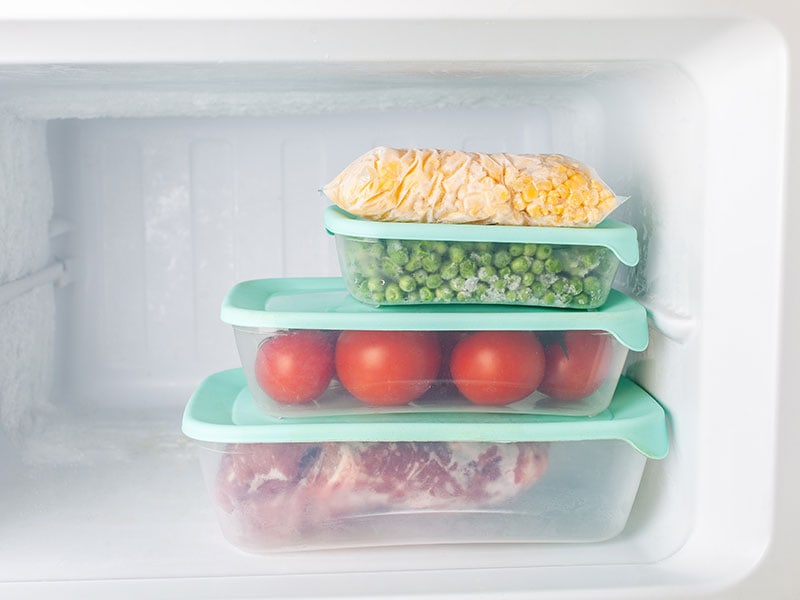
In the previous part, I talk about putting your popcorn in the freezer. This practice is actually a myth to a lot of people, as they do not know if it works or not. So, let’s debunk this myth with me once and for all in this section.
My answer to the question “Can I freeze popcorn?” is YES, YOU CAN! You can do it with both unpopped kernels and popped popcorn.
Let’s start first with freezing popcorn. When you freeze popcorn, it is not technically frozen! When you store it in containers and put them into a freezer, you are prolonging the popcorn’s freshness, as the practice blocks outside air and moisture from your snack.
Make sure to use freezer containers (or freezing-safe containers) for this storing practice.
However, be careful with gourmet popcorn. The freezing practice will make its toppings become frozen solid. Therefore, eating them might hurt your teeth.
You should only rely on this freezing method one time. Refreezing popped popcorn is not recommended, as it diminishes your snack quality and flavor.
However, storing kernels in the freezer is not a good practice, although it is a do-able thing. Freezers drain your kernels’ inner moisture, making them hard to pop in later cooking sessions.
Fix Options For Expired Popcorn
Let’s say you accidentally have some expired popcorn, is discarding it the only solution? Well, the answer is no. Throwing expired popcorn should be the last resort. There are various ways in between to fix your bad snack.
Option #1: Steam With Water
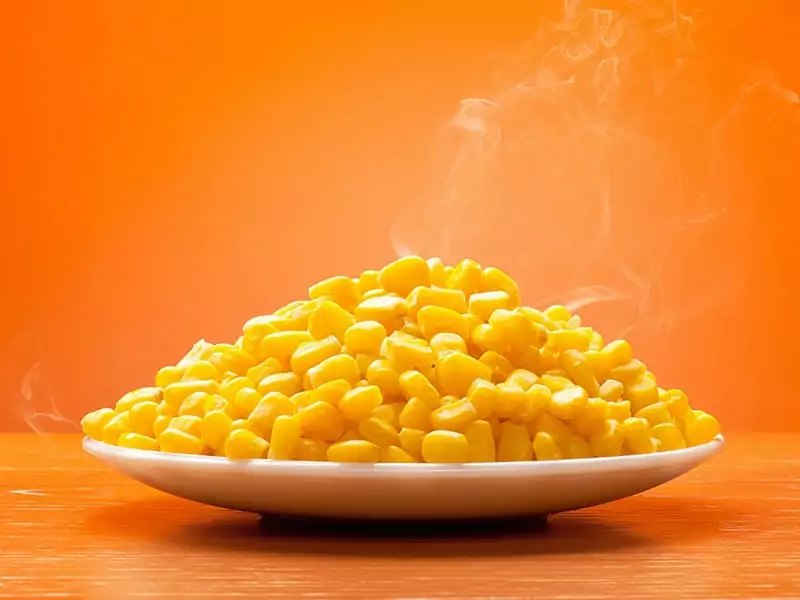
Steaming your stale kernels with water is one quick revising option in under 10 minutes. You will need a pot and a small bowl that can fit inside the pot.
Step 1: Boil Water With Your Pot
Start off by boiling water with your pot. The water height should be around 1.5 inches.
Step 2: Steam Kernels In A Bowl Placed Inside The Pot
Then, fill your small bowl with 1/2 cup of stale kernels and place the bowl inside your hot pot. Cover and steam the kernels for 10 minutes.
Check the water status constantly to make sure it does not boil dry. Otherwise, it could cause a fire hazard.
After that, remove the bowl from the pot.
Step 3: Start Making Popcorn As Normal
After taking the bowl out, you can start popping these kernels in your popcorn machine or on the stove like normal. Afraid that your popcorn might not taste as good? Pairing the snack with high-quality popcorn oils will ensure that you have nothing to complain about this fun treat.
Option 2: Preheat In A Microwave
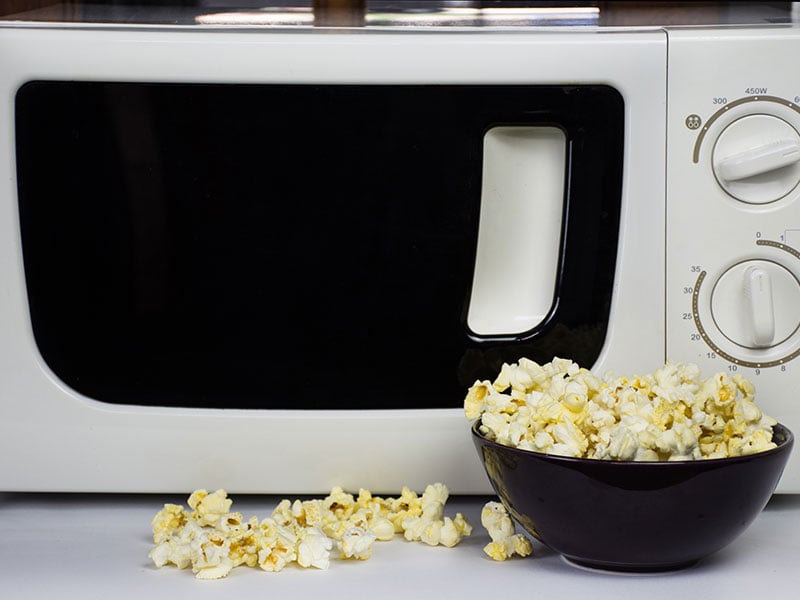
The next fix for you involves the use of a microwave. This practice applies to dry and stale popcorn.
Step 1: Lay Popcorn On a Baking Sheet
Begin by laying the stale popcorn on a baking sheet. Then, place it onto the microwave. The baking sheet helps prevent the popcorn from sticking to the shielded pan inside the machine.
Step 2: Place The Baking Sheet In The Microwave
After that, turn the microwave up to 250 degrees Fahrenheit and set the time to 5 minutes to supplement moisture to the popcorn.
Once it is done, check the popcorn status. If you feel it is not ready to eat, put it in the microwave for another minute or two.
Be careful when using this preheat method with gourmet popcorn, as it may affect the condition of meltable toppings.
You may also notice there will always be some kernels that remain unpopped even after undergoing preheating in the microwave. Here is a brief explanation of the incident:
Option 3: Bake In An Oven
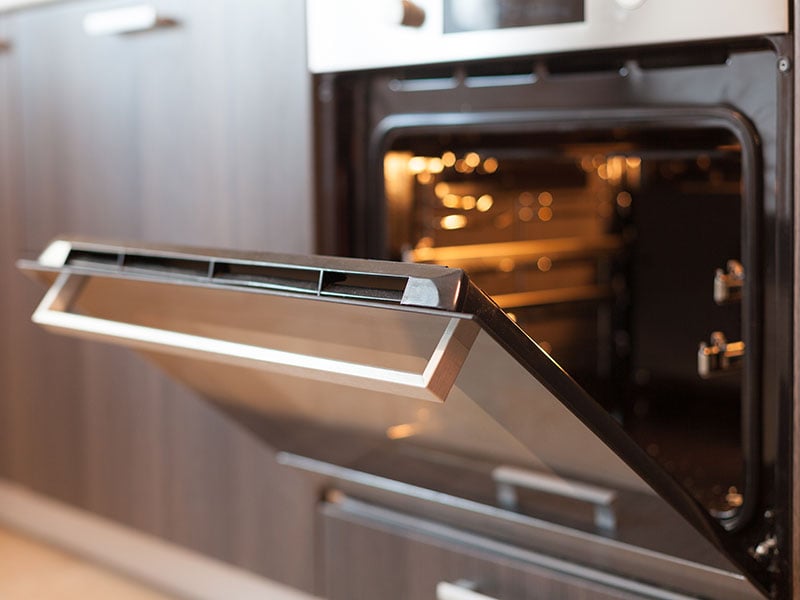
Like preheating in a microwave, you can save your stale popcorn with the oven.
Step 1: Accommodate Popcorn On A Baking Sheet
To begin, set your oven to 300 degrees Fahrenheit. Then, accommodate your stale popcorn on a baking sheet.
Step 2: Place The Baking Sheet On An Oven-Safe Pan
Put your baking sheet with stale popcorn on an oven-safe pan. In this situation, the baking sheet helps prevent the pan from getting burned.
Step 3: Bake The Pan In The Oven
Place your pan in the oven and cook for 5-10 minutes. Check your popcorn to see if it is crunchy or not. If not, continue cooking for a few more minutes.
At this stage, you can add flavors to your popcorn, depending on your preferences. Once you finish cooking, take the popcorn out of the pan and serve it hot in a bowl.
Frequently Asked Questions On How Long Does Popcorn Last
As usual, I will use this section to answer all your inquiries related to the main topic. Let’s get right into it!
Essential Takeaway Remark On Popcorn Lifespan
I believe by now, you have had clear answers to the “How long does popcorn last?” question. Here is an essential takeaway remark of this article’s topic: Popcorn shelf-life depends on whether the popcorn is popped or not. It can span from two weeks after popping to even a year past the expiration date.
I hope you find the information in this article helpful. From now on, you will have more confidence in consuming and storing your all-time favorite snack. If you have further sharings about the topic, feel free to type them in the comment section below. Thank you for reading!
References
(1) Soylu, S. and Tekkanat, A., 2007. Interactions amongst kernel properties and expansion volume in various popcorn genotypes. Journal of Food Engineering, 80(1), pp.336-341.
(2) Science | AAAS. 2021. The secret behind the sound: Why popcorn ‘pops’. [online] Available at: <https://www.sciencemag.org/news/2015/02/secret-behind-sound-why-popcorn-pops>

